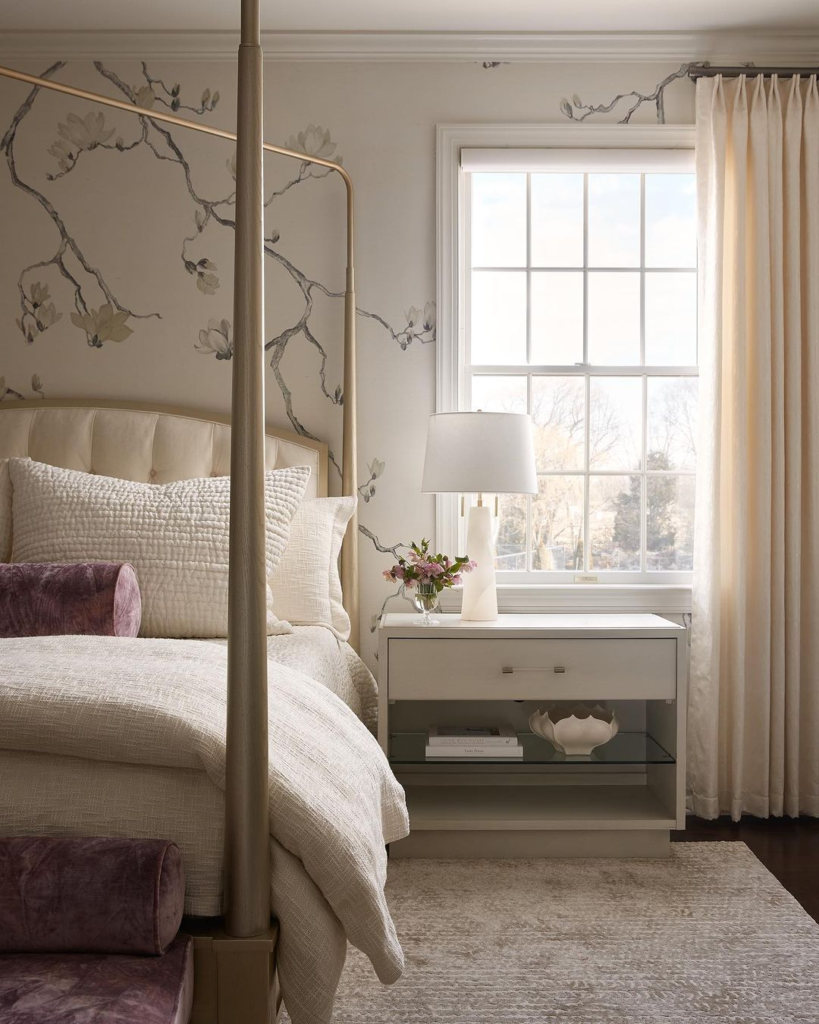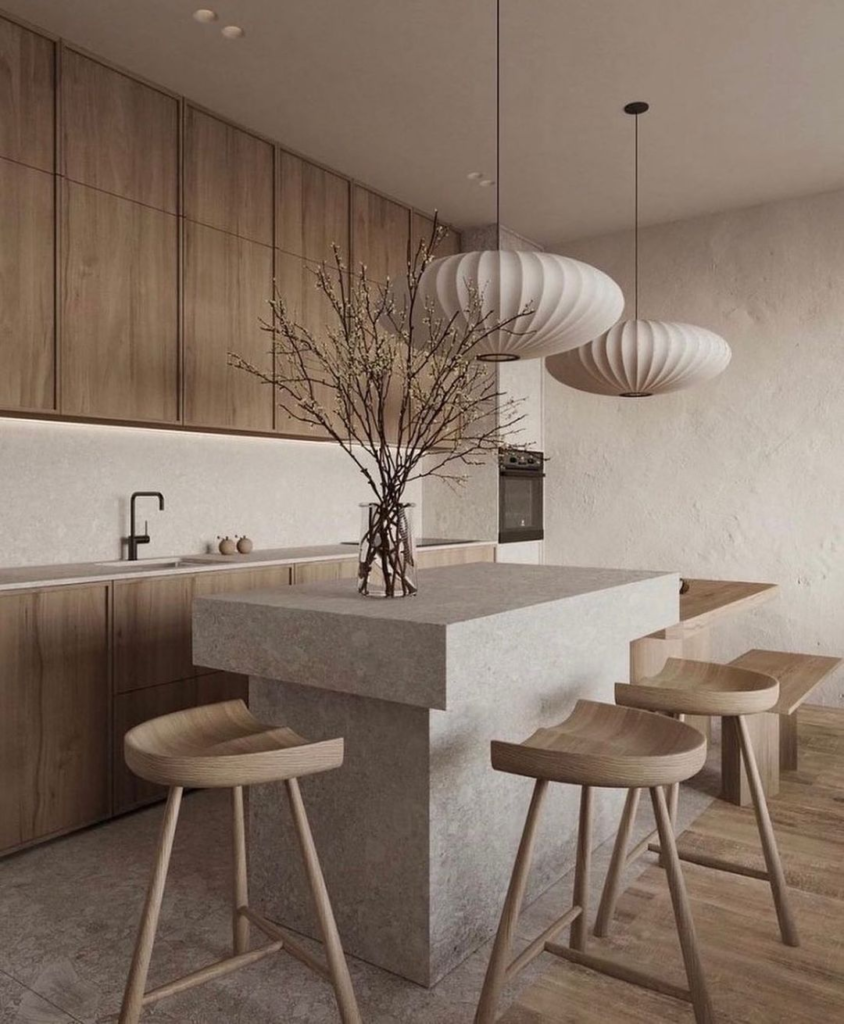- Judith Akatugba
- 0 Comments
- 920 Views
Within the rapidly changing field of interior design, it is simple to become engulfed in the maelstrom of always changing fads and trends. You can be enthralled with bohemian chic one moment and fall in love with minimalism the next. Yet certain classics never go out of style, much like in fashion. They withstand the test of time, growing more alluring every year. What therefore is the key to creating a house that not only expresses who you are but also manages to seem effortlessly exquisite for many years to come? Let me introduce you to timeless interior design, an idea that skillfully combines longevity in style with functionality
Read Also: The Best Time to Visit Cancún
As specialists in home décor, interior design, and all things in between, we’re thrilled to lead you through this timeless method. This article contains eight doable suggestions and methods for building a house that is both long-lasting and aesthetically pleasing.
1. Incorporate Antiques to Modern Settings

It takes a certain kind of design alchemy to integrate antiques into a modern environment. Like many things in design, the key is finding the ideal balance.
Think of antiques as the gourmet dish’s seasoning; they should complement rather than overshadow. Use them wisely and selectively, making sure that the pieces you choose actually enhance the atmosphere and aesthetics of your house rather than merely “fill space” For example, if a 19th-century wooden desk complements the room’s color scheme and has a practical use, such as a writing nook or bar cabinet, it can become an exquisite focal point in a minimalist setting.
Newer pieces frequently fail to replicate the unmistakable atmosphere of authenticity and character that antiques bring to the table, both literally and figuratively. These pieces are more than just furniture or décor; they’re representations of bygone eras, infused with tales and artistry that give your room a multifaceted feel.
2. Select a Classic Color Scheme

Selecting a classic color scheme is essential to building a home that stands the test of time. Conventional wisdom advocates for a muted color scheme that emphasizes the world’s whites, grays, and beiges. And with good reason—these hues are incredibly adaptable. They serve as a calm backdrop, making it easier to tackle future redesign projects while letting your furniture and artwork to shine.
But neutral colors aren’t the only option for a timeless palette. You can add some flair to your area without going overboard with muted blues and greens. The key lies in their subdued, somewhat nuanced tones, which have a timeless appeal that goes well with a variety of aesthetics, from modern to rustic.
However, why do these color selections remain so appealing over time? They make a coherent, welcoming space and are easy on the eyes. They don’t look out of date or conflict with changing design trends in your house. They complement a variety of materials, textures, and historical periods to create living spaces that are sophisticated, hospitable, and—above all—always stylish.
3. High-Quality Fabrics are Your Best Friends

It can be beneficial to use the maxim “quality over quantity” when it comes to interior design. You see, fabric is an experience as much as a texture. Imagine the opulent feel of silk pillows or nestling into a cotton-wool blend sofa after a long day. Upholstery made of natural, breathable materials such as wool, silk, and cotton will feel more luxurious and comfortable. They simply cannot be matched in tactile richness by generic, synthetic materials.
Furthermore, these premium textiles represent an investment in style and practicality that will last for a long time rather than merely being fashionable. Synthetic materials might be more affordable, but their longevity isn’t on par. Natural textiles develop a distinct patina with age that gives your room personality. They provide years of beauty and comfort since they are far more resilient to wear and tear. And let’s be honest: having to replace shabby textiles on a regular basis is not only costly but also tiresome.
4. Minimalism: The Hidden Element of Timeless Design

Less is more may be a cliche, but it truly captures the essence of minimalism, which is a vital component of classic design. The emphasis can then naturally move to the room’s architectural features, such as elaborate crown moldings or a grand fireplace, as well as carefully selected furniture and décor items, thanks to the simplicity and clarity that minimalism provides to interior design.
You see, a minimalist approach is more about a deliberate curation than it is about completely decluttering a space. Every item of art, furniture, and even throw pillows you use should have a purpose, be it decorative or utilitarian. When every component is given great thought, the result is a room where every piece not only has a place, but also enhances the space’s current architectural and design elements.
Essentially, minimalism elevates a room to a world that is always in style by releasing it from the constraints of transient fads and styles. Because, let’s be honest, timeless, well-designed design is never difficult. It emphasizes the space’s inherent qualities and is balanced and well-organized.
5. Textural Balance: A Symphony of Touch

One should never undervalue the ability of texture to add depth, vitality, and a touch of sensory delight to a space while aiming for a timeless look. Imagine entering a living area where the opulent silk curtains blend nicely with the enticing suppleness of leather seats. You have created an experience rather than just a space when you incorporate elements like the chilly elegance of a marble coffee table and the warm embrace of a wool rug beneath your feet.
This well-considered combination of materials delivers a feast for the senses as well as visual appeal, creating an ambiance that is both elegant and inviting. The secret is careful curation. You may add depth and warmth to your room by combining textures that contrast, such as matte with glossy or soft with firm. This kind of three-dimensional design has a rich, sophisticated feel to it without ever veering into the world of fads or transient trends.
More importantly, a harmonious texture palette provides longevity. The avant-garde of today will be out of style by tomorrow, but tactile richness based on diversity endures.
6. Cultural Influences for an Ageless Appeal

Imagine having a Moroccan rug under your feet with its elaborate designs echoing craftsmanship and history, or a Japanese tea set in your living room that reminds you of the centuries-old custom of “chanoyu,” the ceremonial brewing and drinking of matcha tea. These pieces do more than just add decoration; they tell tales and give your house a rich, international feel.
You achieve two goals when you adeptly include these multicultural components into your living areas. First of all, you transform your interior design into a timeless work of art with a variety of influences, going beyond just current. Secondly, you cultivate an air of cosmopolitan refinement that elicits serious discourse in addition to admiration.
Whether it’s the vivid color palettes of Mexican Talavera ceramics or the sleek simplicity of Scandinavian design, each cultural element you add has a distinct aura that works well with a variety of styles and situations. To ensure that no component overpowers any other, it is important to combine these components with harmony and dexterity.
7. Adopt Your Own Style and Go Beyond Trends

True style endures forever, even though trends come and go. A truly timeless house captures the spirit of the people who live in it, not just the pages of a glossy magazine. This is when having a personal touch is important. Consider your house as a larger-than-life representation of who you are. In addition to making a house appear amazing, the little details—often the cutest ones—are what make it feel like home.
So feel free to incorporate items that are sentimental or that suit your aesthetic preferences. If you’re an art enthusiast, your living room’s main attraction can be an enthralling painting by your preferred artist. If you’re lucky enough to acquire heirlooms, such as an old mirror that used to be in your grandparents’ home, these items can bring an invaluable layer of warmth and personal history. Combining modern and classic elements can create a rich, one-of-a-kind tapestry, even if your taste is more varied.
8. Harness the Power of Nature

Natural materials that lend a timeless aspect to your interior design, such as linen, boucle, and jute, also add layers of tactile richness. These components offer a charming paradox: they are both understated and strong, so your decor will never look out of style.
It’s important to remember that nature is a wide canvas that is full with durable materials. Imagine incorporating warm, long-lasting timber elements that last for decades. Imagine worktops made of stone that are both exquisite and long-lasting, aging with grace as they take part in the events of your life.
Think about including florals and geometric motifs as you “bring the outdoors in.” Despite their apparent contradiction, these components work well together in nature and can therefore work well together in your house. While geometric shapes provide structural symmetry and represent the symbiosis seen in the natural world, florals generate a sense of development and vigor.
Recall that the key to timeless design is its capacity to produce environments that feel at once unique and universal, modern and timeless. It’s about encapsulating your essence in a way that holds true while the world around you changes.











